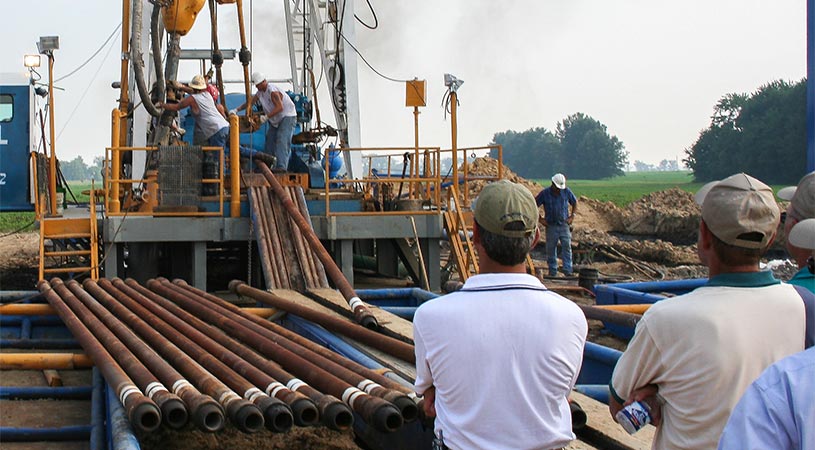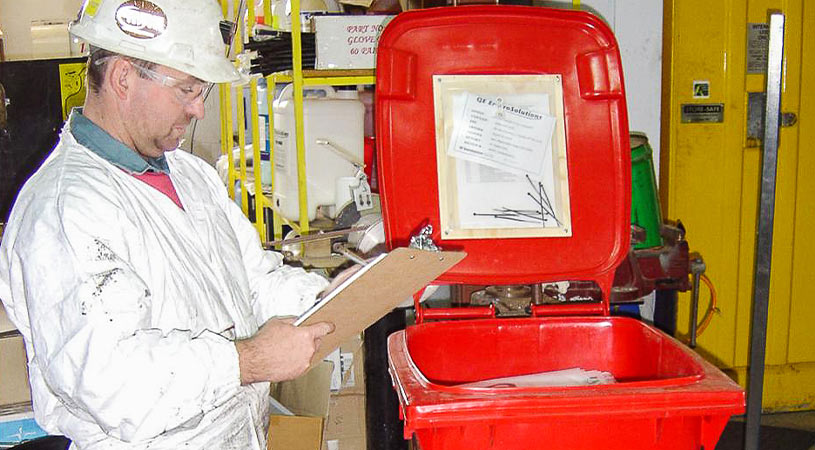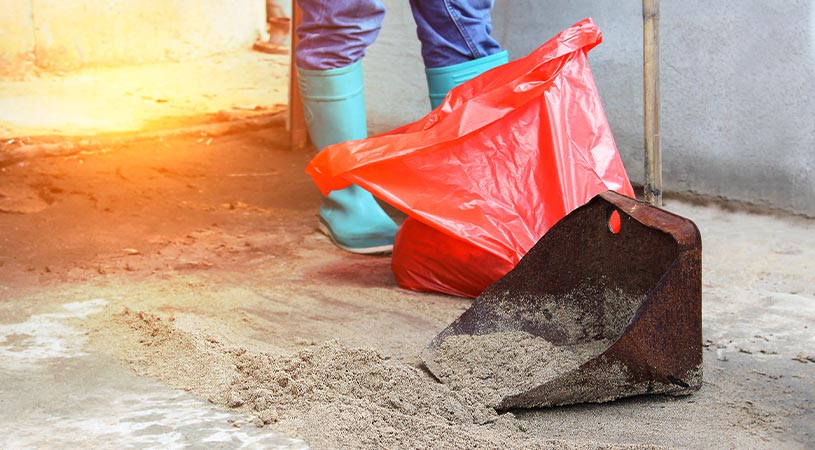How to prepare and respond to spills
Working with chemicals introduces some hazards to the workplace, which must be managed to ensure employee safety. It is no use waiting for a chemical spill to happen before developing a plan to deal with spills.
Emergency spill response procedures can help to focus employees on the actions needed to respond to a spill. They are also helpful tools to train employees on the hazards of the site and what is expected of them.
SpillPro is a trusted supplier of products and services for emergency spill responses. For custom solutions to your workplace, call us on 1800 368 450.
Here are some thoughts to consider as you develop your own site-specific emergency response procedures.
Before a spill happens

1. Keep up to date with chemicals on site
Every chemical is supplied with an MSDS that describes the properties and the hazards of the chemical. Whenever a new chemical is introduced to the site, the relevant information should be captured and distributed to everyone who may come into contact with it. Procedures and spill response equipment may need to be updated to adequately respond to new risks.
2. Prepare your plans in advance
There is no substitute for thorough preparation when it comes to spills. This could take the form of risk assessments to identify the primary spill risks on a site. The results of a risk assessment process would be to place spill response kits in the most high-risk areas.
3. Train your people
Trained people can make the difference between a minor incident contained on site or a major incident that causes substantial environmental damage. Implement training programs for employees and even conduct emergency spill response drills to ensure that each person knows their role in the case of an emergency.
During a spill

1. Assess the situation
Responding to a spill effectively entails knowing the extent of the problem you are dealing with. Some questions you could ask include?
-
Is the source of the spill still leaking?
-
Is there a risk of fire or explosion?
-
Do you need to sound an alarm based on the extent of the spill and the risk?
-
Who do you need to help with the spill response?
2. Contain the spill
Once a chemical spill happens, it is important to contain it so that it does not spread beyond the immediate area. Seal off any drains in the area so that no chemicals migrate into a sewer system and ultimately into the environment. Use booms and other physical barriers to prevent the spill from spreading over the ground.
3. Clean up the spill
The process for cleaning up a spill depends on its size. For smaller spills, use the spill kits you set up in the risk assessment phase. Each kit should have the right spill absorbent for the chemicals in that area. It should also be stocked with the appropriate PPE for the chemicals concerned.
Larger spills may require support from internal emergency response departments and even external agencies. It is vital to get help as soon as it is needed as the longer a spill takes to clean up, the greater the risk of environmental damage.
After a spill

1. Dispose of waste material
Disposal is as important as spill response and clean up. Spent absorbent material must be treated as hazardous waste if the chemical spill itself was hazardous. It can only be transferred to approved hazmat disposal sites for the protection of the environment and for the safety of workers. Landfill workers are not trained in the management of hazardous chemicals.
2. Report the spill
Depending on the volume of spilt chemical and the impact on the environment, it may be reportable to the authorities. Check the requirements for your industry and chemicals onsite to ensure compliance.
3. Find the cause of the spill
Doing an investigation after a spill is an essential step to prevent it from reoccurring. If the source was a pipe failure, the results of the investigation may improve the piping inspection program. If the source was a human error, the results of the investigation may improve procedures and training of employees. If there was an equipment failure, it may indicate that the equipment is not designed for that service. Changing the equipment out will prevent another similar failure.
4. Evaluate your spill response
As with most things in life, there is always room for improvement. By evaluating your response to this spill, you can learn from your experience. In this way, your response will improve each time and the consequences of future spills will be minimised. Some questions you could ask include:
-
Did the first person to notice the spill take the right action?
-
Was the source of the spill stopped in the shortest possible time?
-
Could the spill have been contained in a smaller area?
-
Did you have the right equipment available (e.g. Spill kits etc.)
-
Did people work extended hours and were there issues with fatigue?
And don't forget, it is important to restock spill kits once they have been used as part of a spill response.
Contact SpillPro
SpillPro entered the Australian spill and environmental control market more than 40 years ago. We offer products and services that make your job of handling chemicals and responding to spills easier. Our track record and experience in the industry makes us a trusted partner in the fight to protect our sensitive environment from spills.
Find out more here or call our expert team on 1800 368 450 today.
Must Read
SpillPro on 25 October 2023
Spill Kit Maintenance: A 10-Point Checklist
Consistent maintenance of your spill kit guarantees its readiness for immediate use. Discover more. ...
Read moreSpillPro on 24 October 2016
10 point spill kit maintenance checklist
Here's how to keep your spill kit functioning as it should with regular maintenance ...
Read more